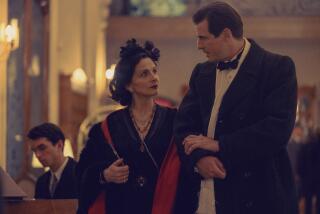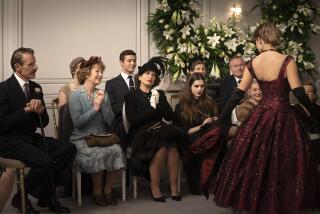In their day, these ladies were the talk of Paris
TALK. Talk. Talk.
Never has there been so much talk, on radio, on television, and none of it memorable, none of it to be remembered, though the phenomenon of that talk is endlessly talked about. How refreshing to turn to âThe Age of Conversation,â a book about talk remembered across the centuries, talk that is as fresh now as it was then, though that might be hard to believe in our age of distrusting anything after the instant of its being enunciated.
Benedetta Craveri has resurrected in tantalizing, inviting detail the supreme age of talk embodied in the great salons of Paris from the mid-17th to the late 18th centuries and the fascinating women at the center of those salons.
You are probably thinking nothing could be duller than a bunch of aristocrats sitting around talking, but as Craveri rhetorically asks, âHow can we compare the intimidating prefabricated notion of âfree timeâ with a culture of leisure in which art, literature, music, dance, theatre, and conversation all constituted a permanent training for the body and the mind?â
With an effortless grasp of the complex period that starts with the reign of Louis XIV and ends with the murder of Louis XVI in the Revolution, Craveri easily insinuates us into this world and its compelling historical figures: Voltaire, Montesquieu, Madame de Lafayette and the Duc de la Rochefoucauld (he of the âMaximsâ). This is only the necessary background for the grandes dames who are suddenly alive at the urging of Craveriâs fluid prose.
She wonderfully describes the Blue Room in Catherine de Vivonne Rambouilletâs great Parisian residence, perhaps the first room in history to be set aside for the sole purpose of conversation. Craveri illuminates Rambouilletâs understanding that since idleness is the essence of an aristocratic life, one must find some purpose to overcome the fear of the void and of solitude that such a life entails. This begins the Age of Conversation, and none better exemplified it than the well-known and much-celebrated Madame de Sevigne or Madame du Deffand, the latter the subject of an earlier book by Craveri.
But the delicious center of this book in the intellectual and emotional sense is the complex, hypnotic Marquise de Sable, who, after her husband had the decency to die, set up her luxurious salon amid the silence of a great Jansenist convent of Port Royal, saying, âTo abandon the world a grace is needed. To hate it none is needed.â
No fiction writer, as the cliche would have it, could invent such a person. De Sable was afraid of dying, Craveri writes, and âin order to avoid sleeping too deeply -- with the attendant risk of never waking up again, she required someone to be by her side and watch over her slumbers with the precise duty of shaking her at regular intervals.â De Sable explained the reason for this: âI fear death more than others do, because no one has ever understood better than I do what nothing is.â
In an aside, Craveri mentions that a âtalent for listening was more appreciated than one for speaking. Exquisite courtesy restrained vehemence and prevented quarrels.â So knowing how to talk, as we do, the question seems to be: How do we create listeners? âThe Age of Conversationâ is a good place to begin.
Thomas McGonigle is the author of the novels âThe Corpse Dream of N. Petkovâ and âGoing to Patchogue.â
More to Read
Sign up for our Book Club newsletter
Get the latest news, events and more from the Los Angeles Times Book Club, and help us get L.A. reading and talking.
You may occasionally receive promotional content from the Los Angeles Times.







